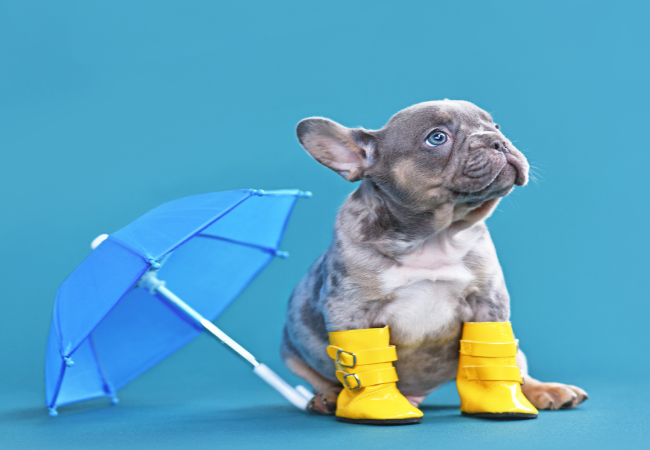Rainy Day Dangers for Dogs Vets 2025 Safety Guide for Stormy Weather 🌧️🐶

In this article
Rainy Day Dangers for Dogs Vets 2025 Safety Guide for Stormy Weather 🌧️🐶
By Dr. Duncan Houston BVSc
Hello—I’m Dr Duncan Houston BVSc, veterinarian and Ask A Vet founder. Rainy weather can be fun for pups, but it also introduces hidden hazards. This vet‑approved guide explores:
- Storm risks: thunder, lightning & low visibility
- Puddle pathogens and chemicals
- Toad and mushroom toxins
- Cold & wet‑weather pneumonia risk
- Practical safety tips and monitoring tools
1. Storm Hazards: Thunder, Lightning & Low Visibility
- Rain, fog & darkness reduce driver visibility—more risk of accidents. Dogs may panic and run if frightened by thunder.
- Thunderstorm anxiety can cause injurious behaviors—chewing or scratching at exits.
- Lightning poses a rare but serious threat—avoid walks during storms, and stay clear of metal like umbrellas.
2. Puddle Pathogens & Toxins
- Leptospirosis: Bacteria from rodent urine in stagnant water—can lead to liver/kidney failure; vaccination recommended if exposed to puddles frequently.
- Giardia: Parasite causing vomiting, diarrhea, weight loss—requires medications like metronidazole or fenbendazole.
- Urban toxins: Pesticides, antifreeze, and chemicals washed into puddles can cause digestive upset, kidney failure, or death.
3. Toad Toxin Risk
Toads secrete bufotoxins when stressed, which can be fatal if licked or mouthed:
- Toad poisoning causes drooling, seizures, cardiac issues. Immediate veterinarian care—flushing and emergency support—can save your dog.
- Prevent by supervising your dog after rain, keeping away from damp areas where toads may congregate.
4. Mushroom & Plant Poisoning
- Toxic wild mushrooms may grow in wet yards—ingestion can cause vomiting, tremors, seizures, organ failure. Treat all wild mushroom ingestion as medical emergencies.
- Other wet‑weather plants or molds can release toxins—avoid foraging and remove mushrooms promptly from yards.
5. Pneumonia & Respiratory Illness
Extended exposure to cold, wet weather can inflame airways, predisposing dogs—especially puppies, seniors, or immunocompromised—to bacterial pneumonia:
- Signs: coughing, wheezing, fever, nasal discharge, breathing difficulty—veterinary evaluation needed promptly.
- Dry your dog thoroughly after walks and provide warm shelter to avoid lung infections.
6. Prevention & Smart Strategies
- Shorten outdoor time—use indoor play or controlled walks.
- Use dog raincoats & booties, and reflective gear during walks.
- Check home area for puddles, mushrooms, toads—clean up and rinse paws/coat after rain.
- Ensure vaccinations are up to date (leptospirosis, kennel cough, parainfluenza).
- Dry wet dogs with towels/low-heat dryer; focus on paws, ears, undercoat.
7. Ask A Vet: Rainy‑Day Tracking & Alerts
- Log wet-weather outings, behavior changes, anxiety signs
- Track vaccination status, medication, and post-walk hygiene routines
- Receive alerts for high-risk signs like coughing, tremors, or drooling
- Use checklists for safe rainy day walk prep and recovery practices
📌 Final Thoughts from a Vet
Rainy days bring more to worry about than just wet fur. From pathogens in puddles and poisonous wildlife to respiratory risks and storm anxiety—being prepared matters. With smart precautions, vaccinations, and Ask A Vet support tools, you can keep your dog cozy, dry, and protected through every storm. 🐾❤️






